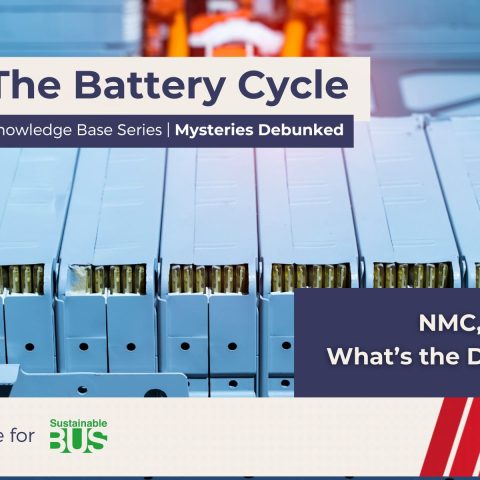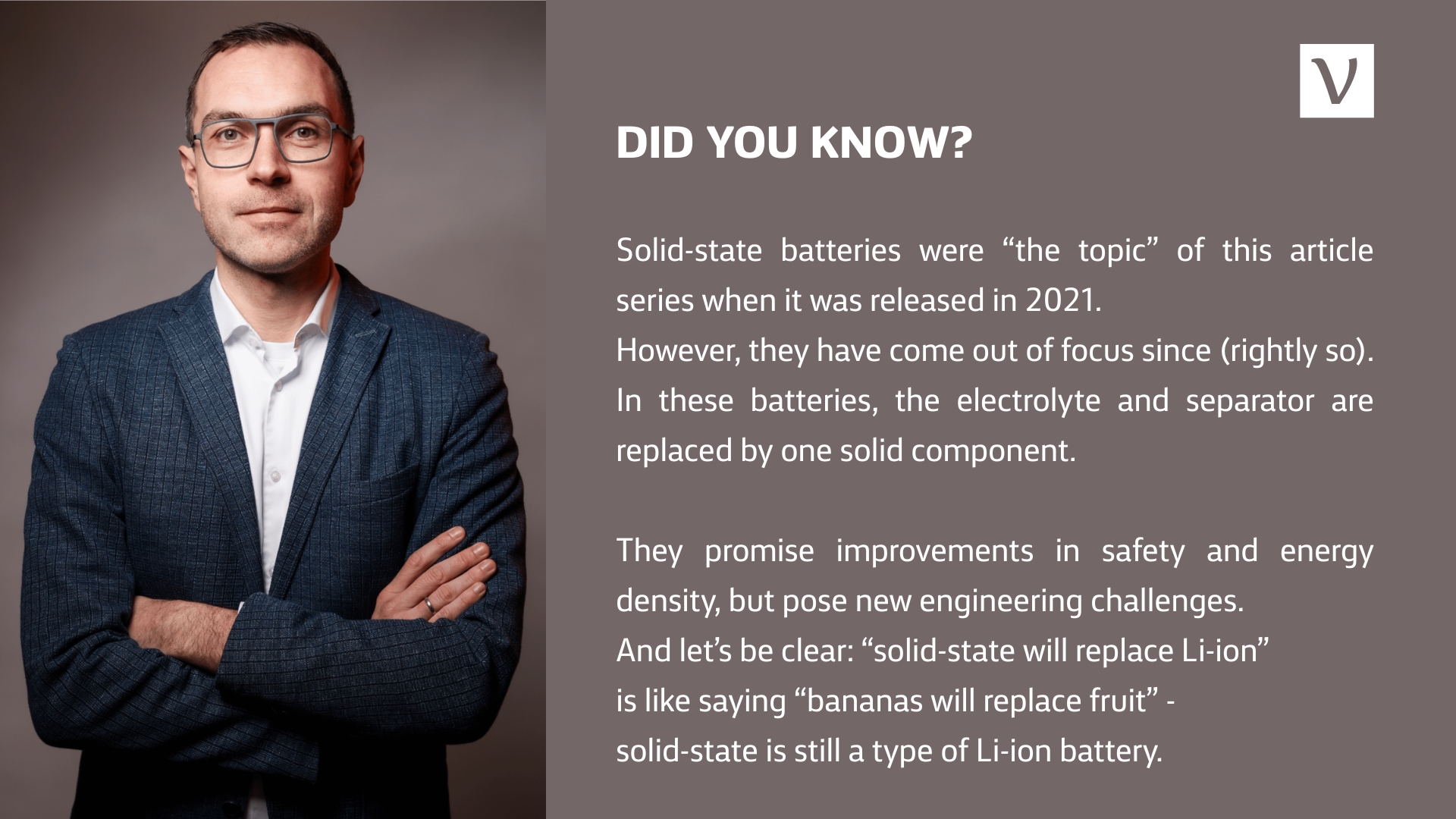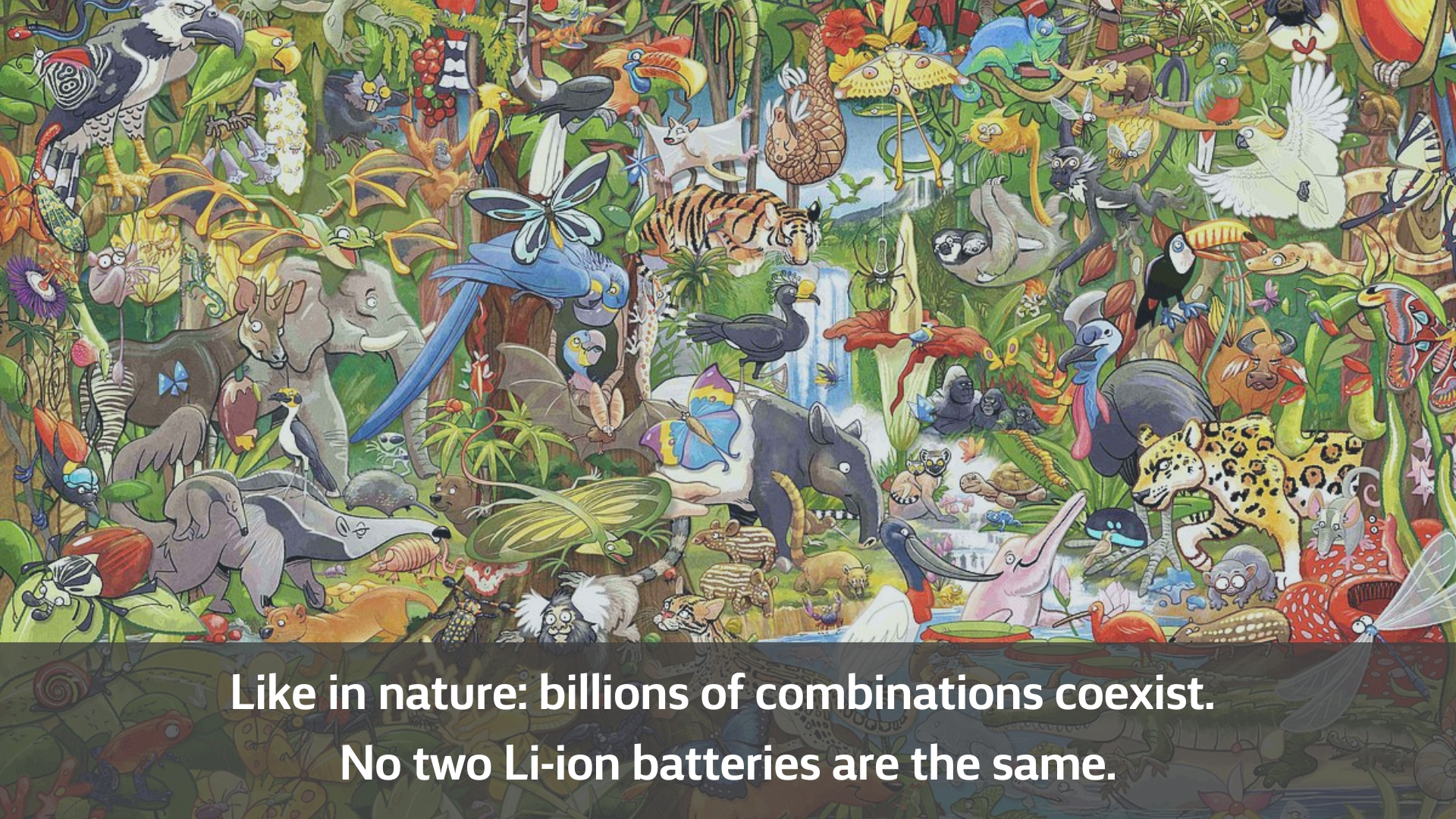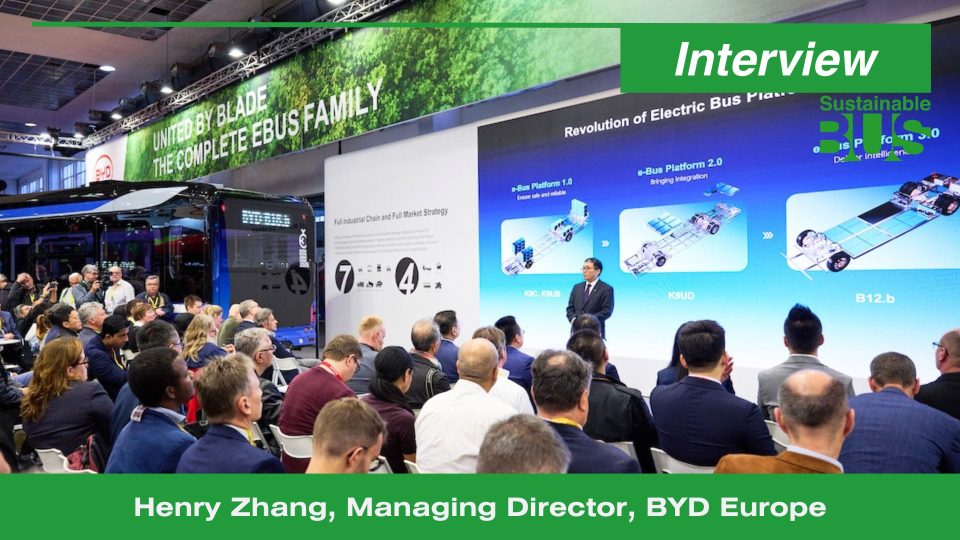NMC, LFP, LTO. What’s the difference? [The Battery Cycle #2 | 2025 RELEASE]
Four years ago, with insights from Claudius Jehle, CEO of volytica diagnostics GmbH, we launched “The Battery Cycle” series of articles, aiming to shedding light on the complexities of Li-Ion batteries.The series provided a huge amount of valuable insights for anyone involved in electric mobility.Now, four years later, we return to those same topics—still thanks […]

Four years ago, with insights from Claudius Jehle, CEO of volytica diagnostics GmbH, we launched “The Battery Cycle” series of articles, aiming to shedding light on the complexities of Li-Ion batteries.
The series provided a huge amount of valuable insights for anyone involved in electric mobility.
Now, four years later, we return to those same topics—still thanks to the collaboration with Claudius Jehle—enriched by real-world data and lessons learned.
We welcome your questions, feedback and contributions at info@sustainable-bus.com.
Today we are going to break down the big term “Li-Ion Battery” and take a closer look at the multiple abbreviations typically accompanying it.
What do NMC, LFP, LTO and the like mean, what properties do they share and what are their individual strengths and weaknesses?

Li-Ions on the run
In a fully charged battery cell, many billions of Lithium ions are trapped in a porous reservoir called the anode, typically a foil or sheet of some particular material we will investigate later. They are embedded within the material structure like parachuters in an airplane, excited to leave their spot and to travel to the opposite reservoir to rest again, called cathode.
Their journey begins when the anode and cathode are connected – e.g., by switching on the electric motor. The Lithium ions leave the anode, releasing electrons which travel through the external circuit to power the motor – “electric current”. The ions make their way through the electrolyte, a liquid that permeates the tiny space between anode and cathode. Also present here is the separator, which physically keeps the two electrodes separated – otherwise: Boom, short circuit!
As always in life, there ain’t no such thing as a free lunch. Li ion batteries share a common baseline mechanism of ion transport through media, and an impressive array of different combinations of different such media push performance into one direction or the other. Improvements are made here and there, but a giant leap in energy density without negative effects on, say, lifetime, cannot realistically be expected
This combination of entirely different types of materials, sophisticated electrode materials, a separator which is both ion-permeable, light and thin, yet also insulating and robust, an electrolyte that allows the Ions to move but electrons to go the “other way”, all on unimaginably small dimensions, but repeated and stacked millions of times in a battery, amounts to no less than a technical masterpiece, one of the most complex and ingenious inventions of the past decades.
A seemingly trivial process
After making their way through the electrolyte, the ions deploy their parachute, slowing down before crowding the entries to the cathode material. One-by-one, they find energetically advantageous positions within the cathode lattice by diffusing slowly into the material. The seemingly trivial process actually involves interaction of the ions with a multitude of different materials, at different speeds and in different processes!
Just image the effect of temperature on the viscosity of the electrolyte and thus the process speed of the passage – think of honey. Or picture that the integration of billions of bulky ions into a tight host material will cause the electrodes to expand, causing stress and strain. All phenomena with serious implications for battery health, which we will examine in the following articles.
Now, to keep it simple, we can say that the anode is almost always based on graphite, plus a myriad of super-secret additives and variations in manufacturing and processing. That’s why we typically just don’t mention it in communications. An exception is LTO, which we will briefly mention later.
In contrast to the first version of this article, today the overwhelming majority of cells used in stationary and most (heavy-duty) mobile applications are LFP-based. Why? Because China, who can be viewed as the sole and only producer of this type of Li-ion technology, has brought production to an unprecedented scale, and the price down to ever more affordable dimensions. Driven by a political will and continuous execution.
Many compositions when it comes to cathode
What is NMC about?
When it comes to the cathode however, the topic becomes more complicated. Cathode materials using compositions of nickel (Ni), manganese (Mn), the highly disputed cobalt (Co) and sometimes aluminum (Al), all in greatly varying compositions and again with undisclosed secret additives and recipes, are simply referred to as NMC or NCA. Such cathodes typically have the following distinguished properties:
- higher energy density (many seats for parachuting ions per volume)
- lower lifetime (densely packed testosterone comes at a price)
- lower safety margins (dito)
- higher price
Particularly the top energy density property, that can moreover be adjusted by increasing the Nickel-content1 (and unfortunately equally decreasing lifetime expectation), make NMC cells the chemistry of choice for hi-performance, long-range and hi-end applications.
NMC’s nemesis: LFP!
However… the major antipole, or nemesis, are cathodes made of LiFePO4 (Lithium Iron-Phosphate, LFP) – renowned for being…
- lower energy density than NMC
- quite robust
- rather economical (abundant materials, no Ni and particularly Co)
In contrast to the first version of this article, today the overwhelming majority of cells used in stationary and most (heavy-duty) mobile applications are LFP-based. Why? Because China, who can be viewed as the sole and only producer of this type of Li-ion technology, has brought production to an unprecedented scale, and the price down to ever more affordable dimensions. Driven by a political will and continuous execution.
Unbeknownst to many that never worked with systems using this type of technology, LFP has one peculiar trait with, in times, severe operational implications: It’s “flat as the desert”: Essentially, the only measurable property that changes with State of Charge (SOC), the voltage, almost doesn’t change at all. It’s like filling up a wine decanter: the filling level in the bulgy part of the vessel won’t change much even if you pour the second bottle of juicy red wine. A horror to the electronics, BMS and operators, as there will inevitably be estimation mistakes on how much energy there actually really is available at the very moment. In practice, this not only limits the intrinsic lower energy density further, it leads to erratic behaviour, and this expensive technology often not used to its true potential.
Last but not least… LTO
Now, last but not least, there’s at least one exotic around: Cells with an anode not made of graphite, but Li-Titanate (Lithium Titanoxid, LTO), often paired with an LFP cathode. Such LFP-LTO cells are often incorrectly just referred to as LTO, embezzling the decisive cathode material. These systems are typically “the special force
- extremely robust (“military grade”), safety and longevity-wise (10-30x LFP or NMC)
- very low energy density (lower than long-forgotten vintage batteries like NiMH)
- quite costly (at least 50-150% more expensive than NMC)
Punchline: Like animals in a jungle
Some of us had combinatory math in school: If there are myriads of ways to build, and millions of additives to add, to an anode, cathode, separator and electrode, there are billions of ways to build a Li ion battery – even if the result might still fall in one of the NMC/LFP/… categories.

Any and all generalizations (“NMC is like this and LFP like that”) will have to limit themselves to a few general bullet points, as the ones given above. There is just such a terrific variety of possibilities for the cell manufacturer to tune the performance or to tease out particular properties, that generalizations are often ‘thin ice’.
To sum up: as always in life, there ain’t no such thing as a free lunch. Li ion batteries share a common baseline mechanism of ion transport through media, and an impressive array of different combinations of different such media push performance into one direction or the other. Improvements are made here and there, but a giant leap in energy density without negative effects on, say, lifetime, cannot realistically be expected.
LFP has one peculiar trait with, in times, severe operational implications: It’s “flat as the desert”: Essentially, the only measurable property that changes with State of Charge (SOC), the voltage, almost doesn’t change at all. It’s like filling up a wine decanter: the filling level in the bulgy part of the vessel won’t change much even if you pour the second bottle of juicy red wine. A horror to the electronics, BMS and operators, as there will inevitably be estimation mistakes on how much energy there actually really is available at the very moment. In practice, this not only limits the intrinsic lower energy density further, it leads to erratic behaviour, and this expensive technology often not used to its true potential.
Looking Ahead in the Series
In the next article, we will give surprising learnings on the complexity of the seemingly simple task of determining the State of Charge of NMC, LFP or LTO cells and the day-to-day implications
Hands-on Tip #2
Know your chemistry and design your operations around it.
If you’re running LFP: Watch SoC accuracy and plan maintenance around potential balancing issues.
If you’re using NMC: Monitor SoH closely to avoid range loss surprises.
If you’re considering LTO: Weigh cost and space vs. robustness.
Different chemistries require different KPIs. Make sure your analytics speak the right dialect.
—
- if Ni, Mn and Co are used in equal proportions, one says “NMC111”. There is a trend in automotive to go for 8-times Ni and equal parts Mn+Co, yielding NMC811 – long range, low lifetime. ↩︎










